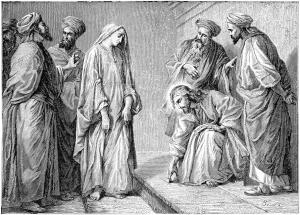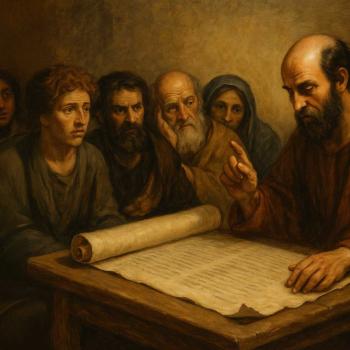
Now I resume blogging about my attendance a few days ago of the virtual conference entitled “New Insights into the New Testament” (NINT), hosted by Dr. Bart Ehrman. As this title suggests, the scholars who presented in it were revealing new insights about the New Testament that they have discovered themselves or insights that are largely known to some scholars but not to most readers of the New Testament.
This was the first such conference, and I think they expect to have more. At one point I think we were told there were about 3,000 in attendance. People had been sent invitations who were known as serious Bible students but not scholars like them. Patrons paid $60 for this two-day conference with a panel of ten presenters. All of them were professors of the New Testament. Surprisingly, some were Christian and some not. For example, Ehrman is a former Christian and probably the bestselling author among all New Testament scholars in the world, yet he is professedly an agnostic. Humorous Amy-Jill Levine is Jewish and a “radical” member of Orthodox Judaism who has great respect for Jesus, but does not believe he was the Messiah promised to Israel. James Tabor is a former Christian, a Gentile Sabbatarian, and an archaeologist of the Holy Land. All panelists delivered an hour presentation about some pre-announced topic followed by a substantial Q&A virtually with attendees.
Today, I am posting here about Professor Jennifer Knust presenting on what is called in the academy “the Pericope Adulterae” found in John 7.53–8.11. It is the famous story of the woman caught in adultery who was brought to Jesus. Dr. Knust titled her presentation, “The Woman Taken in Adultery: How Readers Reshaped the Gospels.”
In case you don’t know this story, it is about some religious men seeing a married woman committing adultery, taking hold of her, and bringing her to Jesus. They told him what she had done and asked if she should be stoned. They asked him this to try to get him to commit some infraction regarding the Torah–the Law of God given to Moses. For Deuteronomy 22.22 (NRSV) says, “If a man is caught lying with the wife of another man, both of them shall die, the man who lay with the woman as well as the woman. So you shall purge the evil from Israel.” (This law is also in Leviticus 20.10.) I think that last sentence is often overlooked. It indicates that such a severe punishment will have the effect of causing people to commit adultery far less. This is important since some people think such punishments do not serve such a purpose.
But a surprising part of this story is that even though the law says both the man and woman caught in adultery shall be executed, the men who brought the guilty woman to Jesus did not also bring the guilty man. I think this further suggests that the driving motive of these men was to trap Jesus, thus not to call for evil to be purged.
I’ve always thought of this story as most intriguing and somewhat mysterious because it raises some unanswered questions. The incident happened because, according to the New Testament, Jesus’ Jewish opponents were repeatedly trying to stump him regarding something about the Torah (first five books of the Old Testament) to get him in trouble with the religious authorities, i.e., the Sanhedrin, and possibly leading to his arrest and worse. That actually did happen except that no one ever stumped the greatest Torah teacher of all time–Jesus of Nazareth.
When seriously thinking of this story about the Pericope Adulterae, the first thing that must be considered is whether it is historically authentic. The reason is that this story in the Gospel of John does not appear in some ancient Greek manuscripts or, if it does, it appears in a few manuscripts of the Gospel of Luke. For instance, it does not appear in the earliest Greek manuscripts of the New Testament. This is important in considering historical authenticity because when it comes to copied manuscripts of some document in antiquity, older is better, meaning it is more liable to be closer to what the original document said. Thus, the pericope adulterae does not appear in either of the two most important and complete Greek New Testament manuscripts: Codex Vaticanus and Codex Sinaiticus which were produced in the fourth century AD. The story does occur in some medieval Greek manuscripts.
Because of this evidence or lack thereof, Dr. Knust said the Pericope Adluterae probably was not part of the original Gospel of John. And she said it is most unlikely that it was there and later removed by copyists, which could be a possibility because the story raises issues that could be regarded as conflicting with something else in the New Testament. This possibility of its removal scholars call the Suppressionist Theory. She explained that at least later scribal copyists had a pattern of writing something in the margin of their copying text if they questioned it’s historical authenticity rather than inserting something into the text, called interpolation, or deleting something.
Many scholars agree that the pericope adulterae is such an unusual story that the nature of it could cause readers to question if it is a true story. But Dr. Knust said the pericope adulterae is not so radical that it likely is historically inauthentic, not even regarding the forgiving of a woman in those times. Most New Testament scholars have believed that this story really happened and that it was a part of the early, oral tradition about Jesus, which I think is likely true. How she answered the question of how readers reshaped the gospel gets a bit complex.
Dr. Knust explained that, because the pericope adulterae does not have much manuscript support, many English Bible versions include it but place it in brackets, indicating that its historical reliability is somewhat questioned. She then pointed out that there are similar bracketed texts or portions in the New Testament, such as “Son of God” in Mark 1.1. Another example is Jesus sweating drops of blood, in Luke 22.44. And some versions include John 5.4 whereas other versions do not. That is about the invalid at the pool near the temple at Jerusalem, in which it says an angel sometimes stirred the water, thus causing people to be healed.
In this story of the adulteress woman, her accusers said to Jesus, “‘Teacher, this woman was caught in the very act of committing adultery. Now in the law, Moses commanded to stone such women. Now what do you say?’ They said this to test him so that they might have some charge to bring against him. Jesus bent down and wrote with his finger on the ground. When they kept questioning him, he straightened up and said to them, ‘Let anyone among you who is without sin be the first to throw a stone at her'” (John 8.4-7).
Dr. Knust finished her presentation and accepted questions from the virtual audience, with Dr. Ehrman directing. She was asked, “What was considered adultery at that time?” She said in that ancient, patriarchal society, women were considered the sexual property of men for both husbands and fathers. She added that the first church father to ask in his writings, “where was the man?” was Ambrose.
I was surprised when Dr. Knust was asked what Jesus wrote on the ground, which many readers ask. She said, “I have no idea what Jesus wrote on the ground. Maybe Jesus told her, ‘I’ll tell you later what I wrote on the ground.'”
I blogged about this story on April 17, 2015, and I titled it, “What Did Jesus Write on the Ground?” I am convinced that Jesus wrote the names of the woman’s accusers along with the names of some women with whom they had committed adultery in their lives. And when they saw it, that is why these men gradually exited the scene with no more talk. The Master-Teacher-Prophet of the Almighty God of Israel had put to silence the male, religious hypocrites once again.
So we read further, “Jesus was left alone with the woman standing before him. Jesus straightened up and said to her, ‘Woman, where are they? Has no one condemned you?’ She said, ‘No one, sir.’ And Jesus said, ‘Neither do I condemn you. Go your way, and from now on do not sin again'” (John 8.9-11).
Many people have said that this story about Jesus and the adulteress woman reveals that Jesus was more forgiving about the sin of adultery than most people would have expected. I doubt that. Israel carried out such laws with the elders as judges. They would convene a gathering in which the guilty would stand before them, the offense would be stated, and witnesses would speak. with elders and witnesses standing around the accused. Then, the witnesses were required to cast the first stones. But all such laws of Moses, given to him by God, innately required that witnesses and elders themselves were not guilty of that sin. Jesus, as a God-inspired prophet, had exposed the hypocrisy of the woman’s accusers, so that they were not qualified to throw a stone at her and they knew it. But Jesus was not a witness to this woman’s sin. Therefore, according to the Law of Moses, Jesus could neither accuse her or cast a stone at her.
And the issue about whether Israel had any authority at all to invoke such religious laws while under the subjugation of the Roman Empire is a subject for another day.













